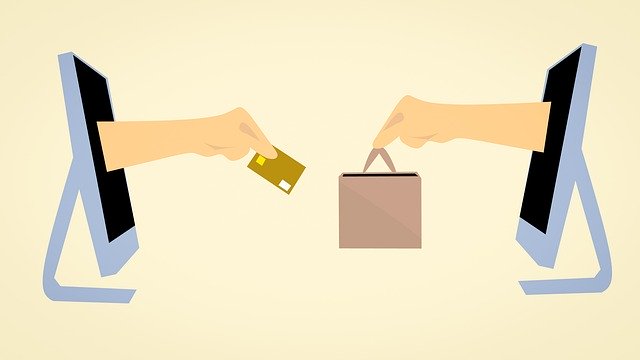Adam Baker, Marketing Strategy Manager, Capability Development Team, Bord Bia – The Irish Food Board
There are a number of advantages to developing eCommerce as part of your business model. The benefits far outweigh the costs for most businesses, especially if you can begin to scale your online sales to a level where it meets your business objectives. The below guide outlines some of the key factors you need to understand before you develop this route for your business.
This alert precedes the upcoming Bord Bia eCommerce webinar on Wednesday 1st April at 11 AM which will go into jargon-free detail on how to grow this channel for your business. Register here
But before you start….
You need to ask, and answer, a number of questions:
- What is my motivation to sell online? Short term response or long-term strategy?
- What is the (realistic) size of the opportunity for my business?
- Given the size of the prize, what’s the “opportunity cost” of going online, i.e. what will not be done while I’m developing my online business?
- Do I have the resources to sell online? The staff, the IT infrastructure, the internal processes, etc.
- If not, do I have the time and the budget to put them in place?
- Stock management – am I able to manage my stock inventory with a new channel? Do I prioritise orders? What is my delivery plan? Does this fit into existing stock, raw material or supply chain operations I currently have for our ‘traditional’ channels
Which eCommerce platform should I choose?
Assuming you have a website you’ll need to add eCommerce functionality to enable customers to buy products securely from your business. The quickest and easiest way to do this is, add an eCommerce platform to your existing website. This platform will be fully integrated with your existing website and will give you all the capabilities you need to start selling online.
There are a vast number of eCommerce solutions out there, so the trick is to find the one that best suits your needs. Some platforms can cost thousands of euro and take weeks to implement but equally, there are some that can be set-up very quickly, without requiring external support. The market leaders in the hosted eCommerce Platform space are Shopify, Woo Commerce and Big Commerce

How will I integrate with my current website?
Hosted eCommerce platforms have been specifically designed for easy integration with websites. In the same way that these platforms are designed to easily integrate with your frontend i.e. your website, they also have a range of extensions and APIs to allow you to connect with your backend e.g. CRMs, warehouses, logistics etc. When you are shortlisting your platform, have a list of the backend systems requiring integration to hand and search for the applicable extensions and APIs.
How do I add my products to my online shop?
Adding products to your store is one of the basic functionalities and again all eCommerce sites are designed to handle it. It is generally done in one of two ways; manually (drag and drop) or bulk import (such as an excel of .csv file).
No matter how many products you have, give as much product information as possible.
- Photos significantly increase conversion.
- Add multiple product shots, with & without packing, serving suggestions etc. where available.
- Can you make a short video about the product?


My shop is ready, how do I get traffic?
Getting traffic to your online shop is the same as getting it to your website. The only real differences are that you looking to “convert” your traffic to sales. Many people visiting your site will be looking for information, not to buy, especially if you’ve only just started selling online. Bringing people to your website can be expensive and conversion rates can be as low as .05%, so don’t be too downhearted if you initially see lower than expected traffic to the eCommerce part of your site and low conversion rates.
1. Organic Traffic
Organic traffic is the best if you can get it. Search Engine Optimisation (SEO) is still key, so correct tagging on all product pages is essential and again your eCommerce platform can help with this. The more product information the better for SEO. For more information on SEO see this Google guide
2. Paid Search/ Google Ads
Even with good SEO, you’ll probably need to pay for traffic through Google Adwords, Display network etc. Again, the same as for your website, but you need to be very selective in the keywords you use as the traffic you get may be expensive and may not convert. This Google Guide will help you get started Grow your business with Google Ads. The most important premise is to understand what exactly your potential customers are searching for and making sure that your products are aligned with their search and needs.
3. Social Media
Social media, especially Facebook and Instagram can be an excellent way to get traffic to your website, especially when you already have a strong social media presence.
- Facebook Ads can be an alternative to Google Ads and it’s worth testing both to see which works best for you.
- There is also a range of plugins available through your eCommerce platform which will allow you to sell directly through Facebook and Instagram. Conversion through these plug-ins tends to be lower but it can be worth trying out.
For more information on how best to utilise Facebook and Instagram check out this Bord Bia webinar masterclass.
How do I manage payment?
In Ireland, unlike other markets like where “cash on delivery” and cheques are still used, all payments will be by credit/debit card. The most popular payment methods for small business are Pay Pal https://paypal.com/ and Stripe https://stripe.com/. Both are easy to implement through your eCommerce platform. The fees on Stripe are a little lower, but you’ll have to wait longer to get your money.
My customer has paid, what next?
Once you get an order, the work has only begun, it needs to be managed end-to-end. As with almost all other topics in this area, your eCommerce platform has been designed to manage all of these, so there are lots of useful tools to help.
- Order acceptance:
- Pick & Pack:.
- Delivery:
- Returns EPOS:
- Stock Management:
- CRM & Post Purchase
This guide is part of the Think Digital programme, which seeks to enhance the digital capabilities if Irish food, drink and horticulture companies whilst also equipping the business with the resources and supports to deliver best in class digital activation. Register your interest to learn how we can support your business in Digital Marketing.










